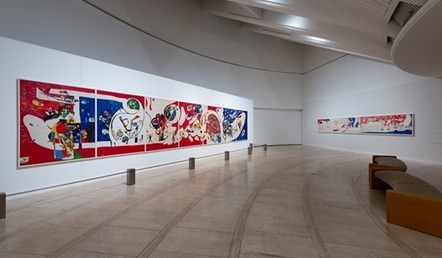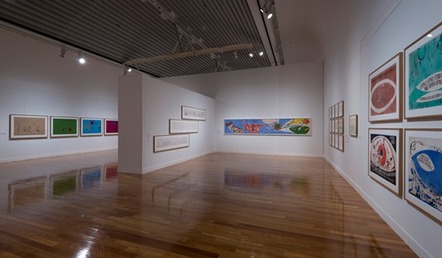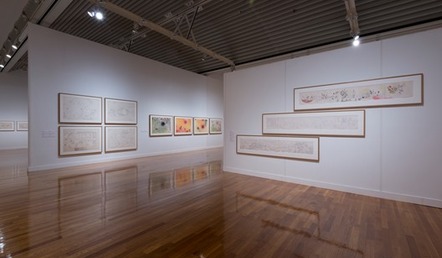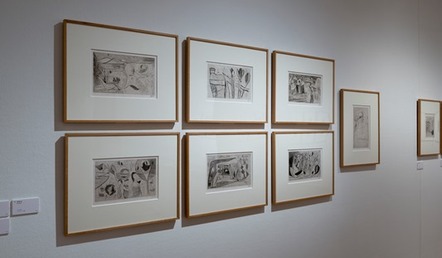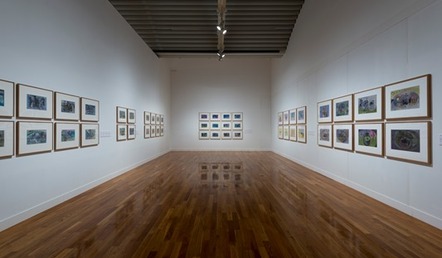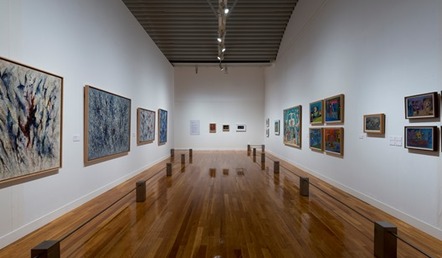The 1960s, now already a half-century in the past, was a unique period of free expression in which young people all over the world, working in every genre, followed their own creative paths to unveil the thoughts and feelings of a new age. Fumio Nambata(1941-1974) passed his youth in those years, a painter with a finely honed sensitivity to the visual and to language, roaming a world of his own. He lost his life prematurely in an accident at the age of 32, but left behind more than 2,000 pieces that he had created in an extremely active period of under 15 years.
Most of these are watercolor-and-ink depictions of an imaginary world. Nambata conjured a profusion of images that he painted in his own free style, unimpeded by the considerations of realism and composition that are ordinarily fundamental to painting. Rather than going to college, he decided at 18 to follow his own path in art, and fortified and inspired by his own voracious appetite for reading and music, he had ”adventures in images”, one after another, that were intensely original.
The Setagaya Art Museum collection has more than 800 Fumio Nambata works. About 300 of these are being showcased in the current exhibition under the title, “The Imaginary World of Fumio Nambata.”
Most of these are watercolor-and-ink depictions of an imaginary world. Nambata conjured a profusion of images that he painted in his own free style, unimpeded by the considerations of realism and composition that are ordinarily fundamental to painting. Rather than going to college, he decided at 18 to follow his own path in art, and fortified and inspired by his own voracious appetite for reading and music, he had ”adventures in images”, one after another, that were intensely original.
The Setagaya Art Museum collection has more than 800 Fumio Nambata works. About 300 of these are being showcased in the current exhibition under the title, “The Imaginary World of Fumio Nambata.”
